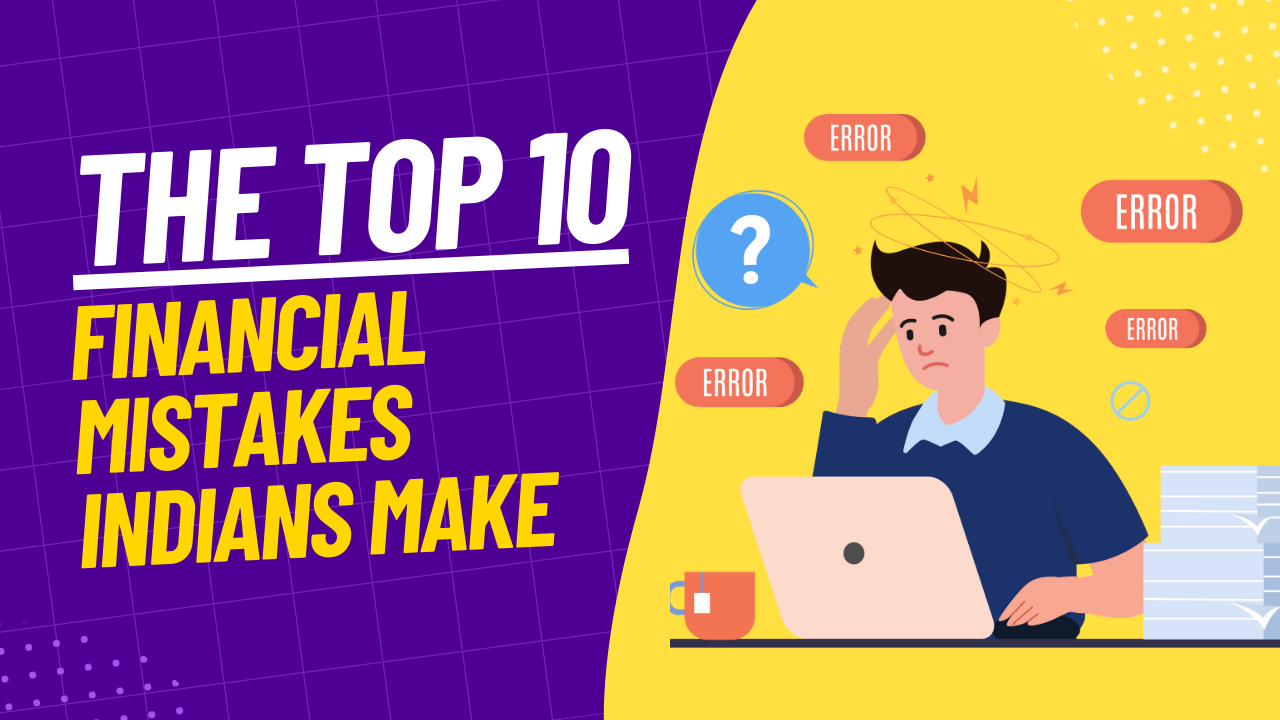One of the key concepts that you need to master if you want to achieve financial freedom is compound interest. Compound interest is the interest that you earn not only on your original investment but also on the interest that accumulates over time. In other words, it is the interest on interest.

Compound interest can have a huge impact on your wealth over the long term, as it allows your money to grow exponentially. The longer you invest, the more you can benefit from the power of compounding. In this blog, we will explain how compound interest works, how to calculate it, and how to use it to grow your wealth.
How Compound Interest Works
To understand how compound interest works, let’s compare it with simple interest. Simple interest is the interest that you earn only on your original investment. It does not take into account the interest that accumulates over time. For example, if you invest ₹1,000 at 10% simple interest per year for 10 years, you will earn ₹100 every year, and your total amount after 10 years will be ₹2,000 (₹1,000 principal + ₹1,000 interest).
Compound interest, on the other hand, is the interest that you earn on your original investment as well as on the interest that accumulates over time. For example, if you invest ₹1,000 at 10% compound interest per year for 10 years compounded annually, you will earn ₹100 in the first year, but ₹110 in the second year (₹100 + 10% of ₹100), ₹121 in the third year (₹110 + 10% of ₹110), and so on. Your total amount after 10 years will be ₹2,593.74 (₹1,000 principal + ₹1,593.74 interest).
As you can see, compound interest gives you a much higher return than simple interest over time. The difference becomes even more significant as the time period and the interest rate increase. For example, if you invest ₹1,000 at 10% compound interest per year for 20 years compounded annually, your total amount will be ₹6, 727.50 (₹1, 000 principal + ₹5, 727.50 interest), while simple interest will only give you ₹3, 000 (₹1, 000 principal + ₹2, 000 interest). That’s a difference of almost ₹4, 000!
How to Calculate Compound Interest
The formula for calculating compound interest is:
Compound Interest = Total Amount – Principal
or
Compound Interest = Principal * (1 + Rate / Number of Compounding Periods) ^ (Number of Compounding Periods * Time) – Principal
Where:
- Principal is the initial amount of money invested or borrowed
- Rate is the annual interest rate expressed as a decimal
- Number of Compounding Periods is how often interest is added to the principal per year (e.g., monthly = 12, quarterly = 4, annually = 1)
- Time is the number of years for which the money is invested or borrowed
- ^ means raised to the power of
For example, if you invest ₹1, 000 at 10% compound interest per year for 10 years compounded annually, your compound interest will be:
Compound Interest = ₹1, 000 * (1 + 0. 10 / 1) ^ (1 * 10) – ₹1, 000
Compound Interest = ₹1, 000 * (1. 10) ^ 10 – ₹1, 000
Compound Interest = ₹2, 593.74 – ₹1, 000
Compound Interest = ₹1, 593.74
You can also use online calculators or spreadsheets to calculate compound interest easily.
How to Use Compound Interest to Grow Your Wealth
Now that you know how compound interest works and how to calculate it, here are some tips on how to use it to grow your wealth:
- Start investing early: The earlier you start investing, the more time you have for your money to grow and compound. For example, if you invest ₹1, 000 at 10% compound interest per year for 40 years compounded annually, your total amount will be ₹45, 259.26 (₹1, 000 principal + ₹44, 259.26 interest). But if you start investing 10 years later with the same amount and rate, your total amount will be only ₹17, 449.40 (₹1, 000 principal + ₹16, 449.40 interest). That’s a difference of almost ₹28, 000!
- Invest regularly: Investing a fixed amount of money every month or every year can help you take advantage of compound interest and build a substantial portfolio over time. For example, if you invest ₹100 every month at 10% compound interest per year for 40 years compounded monthly, your total amount will be ₹632, 412.09 (₹48, 000 principal + ₹584, 412.09 interest). But if you invest a lump sum of ₹48, 000 at the same rate and time, your total amount will be only ₹226, 296.28 (₹48, 000 principal + ₹178, 296.28 interest). That’s a difference of over ₹400, 000!
- Reinvest your interest: Reinvesting your interest means adding it back to your principal and earning interest on it as well. This way, you can accelerate the compounding process and increase your returns. For example, if you invest ₹1, 000 at 10% compound interest per year for 10 years compounded annually and reinvest your interest every year, your total amount will be ₹2, 593.74 (₹1, 000 principal + ₹1, 593.74 interest). But if you withdraw your interest every year and only invest your principal, your total amount will be only ₹1, 000 (₹1, 000 principal + ₹0 interest). That’s a difference of over ₹1, 500!
- Choose a higher interest rate: The higher the interest rate, the faster your money will grow and compound. For example, if you invest ₹1, 000 at 10% compound interest per year for 10 years compounded annually, your total amount will be ₹2, 593.74 (₹1, 000 principal + ₹1, 593.74 interest). But if you invest the same amount at 5% compound interest per year for the same time and frequency, your total amount will be only ₹1, 628.89 (₹1, 000 principal + ₹628.89 interest). That’s a difference of almost ₹1, 000!
- Choose a higher compounding frequency: The more often interest is added to your principal, the more compounding effect you will get. For example, if you invest ₹1, 000 at 10% compound interest per year for 10 years compounded annually, your total amount will be ₹2, 593.74 (₹1, 000 principal + ₹1, 593.74 interest). But if you invest the same amount at the same rate for the same time but compounded monthly, your total amount will be ₹2, 720.08 (₹1, 000 principal + ₹1, 720.08 interest). That’s a difference of over ₹100!
Conclusion
Compound interest is one of the most powerful concepts in finance and investing. It can help you grow your wealth exponentially over time by earning interest on your initial investment as well as on the accumulated interest. To use compound interest to grow your wealth, you need to start investing early, invest regularly, reinvest your interest, choose a higher interest rate and a higher compounding frequency.
References:





